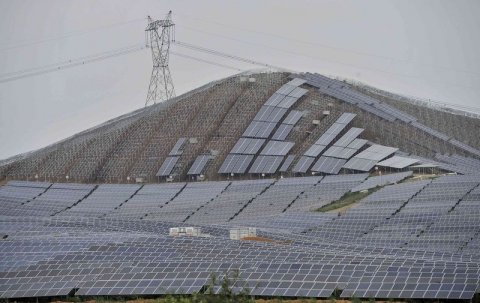
More Great News for Solar Installers Everywhere
One of the major reasons why non-renewable forms of energy such as oil, coal, and natural gas continue to make up the majority of the energy used in this country has to do with the cost associated with each. For many years, the simple truth was – these forms of energy are cheaper, and sure, they may present a greater threat to the environment, but what difference does it make when they’re so much cheaper? Well that all may be about to change, according to recent news.
Deutsche Bank released a new report at the end of October that detailed exactly how solar electricity will be equal to or cheaper than average electricity-bill costs in no less than forty-seven of the fifty states, and this is supposed to happen as soon as 2016. And coincidentally, the federal government’s current tax credit (set at 30%) for solar system installation is also set to run out in 2016, unless the government renews it.
According to the report, that 30% credit could fall as low as 10%, and with that much of an incentive, solar power costs will be roughly the same as conventional forms of power in as many as thirty-six states, making the proposition to go solar still look pretty attractive for consumers. And just like the case with so many other forms of technology, as solar continues to evolve, the costs continue to decline, creating more and more of a mainstream appeal in what was once only a niche market.
More Good News Regarding Solar Power in the U.S.
Already, solar is on par with other forms of mainstream electricity in as many as ten states, which when taken collectively, account for 90% of solar electricity production in the country. And making things sound even more promising, the International Energy Agency (IEA) announced in late September that by the year 2050, solar energy just is on track to be the top source of electricity, due in no small part to the “plummeting costs of the equipment [needed] to generate it.”
The Reuters article goes on to quote the IEA as saying that “solar photovoltaic (PV) systems could generate up to 16 percent of the world's electricity by 2050, while solar thermal electricity (STE) – from ‘concentrating’ solar power plants – could provide a further 11 percent.” Since 2000, it’s important to note, solar photovoltaic panels have been the fastest growing renewable energy technology in the world.
How Much Energy Solar Power Currently Provides
According to the U.S. Energy Information Administration, solar power only contributes 0.23% of the total amount of electricity generated in the country each year. With coal and natural gas making up 39% and 27% respectively, solar power is not going to make a dramatic impact anytime soon. But somewhere down the road, that is all going to change.
When combined, the two solar technologies (solar photovoltaic systems and solar thermal electricity) could also “prevent the emission of more than 6 billion tonnes of carbon dioxide per year by 2050 […] more than all current energy-related CO2 emissions from the United States or almost all of the direct emissions from the transport sector worldwide today.” The IEA also notes that because the findings in the report do not represent a “forecast” of things to come, much of the rapid adoption of solar technology the world over will depend on “clear, credible and consistent signals from policy makers.”
[Photo Credit: Business Insider]
Start making more
money today!
Search Categories
Tags
Tag Cloud
Latest from Twitter
Contact Us
Call us at 310-540-8900 or fill out the form below and we’ll tell you how you can get high quality leads for free*.
* Get up to 10% free leads on your first order!